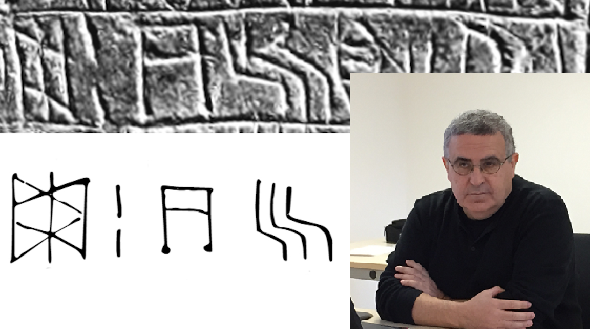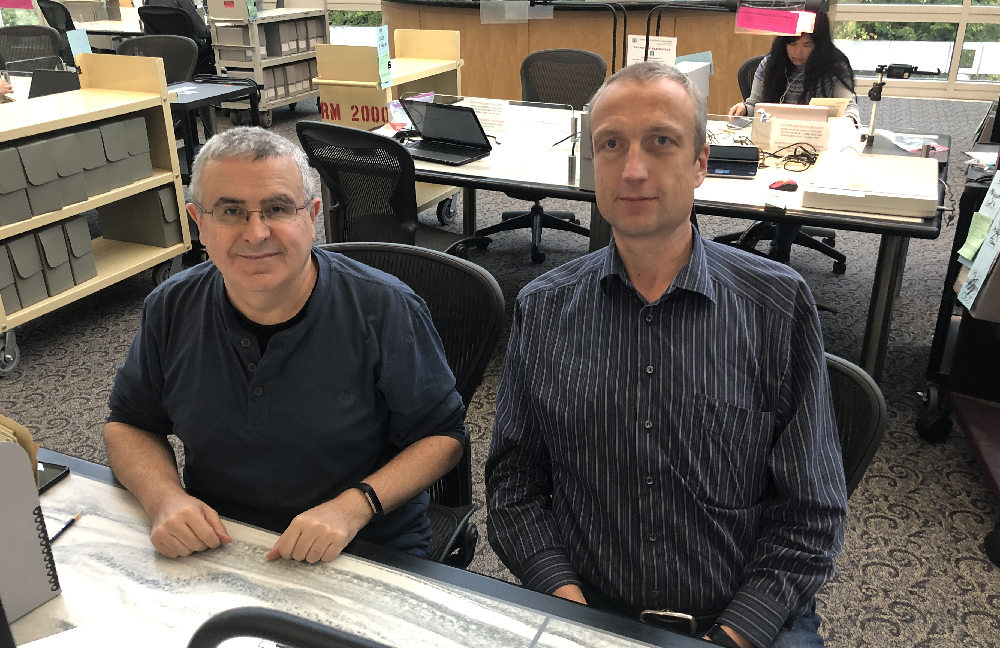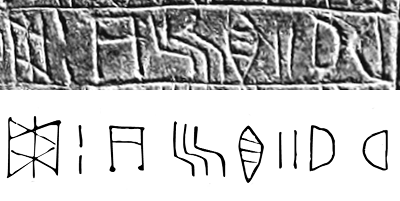Elamian script from the Bronze Age deciphered
A French archaeologist has succeeded in solving a writing from the Bronze Age. Blog reader George Lasry explains how this success came about.
When it comes to cryptology and its history, sooner or later the question of deciphering ancient scripts also comes up. The story of Jean-François Champollion, who succeeded in deciphering Egyptian hieroglyphics in the early 18th century, is particularly well known. The deciphering of the linear cipher B used in Greece is also acknowledged in many popular scientific works. Probably the best known still unsolved script is the linear script A, which also originated in Greece.
The Elamian stroke script
Admittedly, I have never been too interested in ancient scripts and their unraveling. Ancient scripts are not cryptology, because they were not used for secrecy, and therefore do not fall into the field of knowledge I am familiar with. My books on the history of cryptology – for example “Codebreakers vs. Codemakers” – therefore do not contain chapters on ancient scripts, while other crypto authors (for example David Kahn and Simon Singh) do cover this topic.
When a few days ago the press reported that a French archaeologist had unraveled the hitherto unsolved “Elamite stroke script” from the Bronze Age (thanks to several readers for tips on this), I did not intend to blog about it at first for the reasons mentioned above. But then I received an email from blog reader George Lasry offering to write a short summary for my blog. Of course I agreed.
Quelle/Source: LasryGeorge is known to many Cipherbrain readers as a world-renowned codebreaker. Two weeks ago, I was able to report on 21 documents he deciphered at one point. Since then, he has cracked a few more ciphers, but has not yet gotten around to publishing anything about them.
I initially knew George as a specialist in solving ciphers where the method is known but the key has yet to be found. The double cube challenge he solved years ago is a spectacular example of this. Meanwhile, George has also made a name for himself in cracking nomenclator and codebook ciphers. This is extremely gratifying, because although this form of encryption was extremely popular for centuries, until a few years ago there was no one who could be considered a specialist in solving such methods. Thanks to George, this has now changed, and since there are probably tens of thousands of cryptograms of this type still lying dormant in the archives, he will not run out of work.
George’s report on the Elamian stroke script
Let’s move on to the report George sent me on deciphering the Elamite stroke script (German-speaking readers may forgive me for not translating the text from English):
Francois Desset, a French archeologist, and his team have recently succeeded in deciphering one of the oldest ancient scripts, Linear Elamite. This achievement is considered on the same level as the decipherment of Linear B by Michael Ventris in the 1950s. Some even compare it to Champollion’s decipherment of the Egyptian hieroglyphs in the 19th century.
Elam was a civilization – mentioned in the Bible – with inscriptions first recorded around 3200 BC, in scripts called Proto-Elamite (from 3200 to 2500 BC) and Linear Elamite (2300-1800 BC). Those inscriptions are contemporary with early Egyptian hieroglyphs and Summerite cuneiform writings, the cuneiform script superseding the early Elamite scripts from around 2000 BC.
Together with the famous script of the Hindus Valley – in today’s Pakistan – originating from around 2500 BC and the much later Linear A (found in Greece), the early Elamite scripts were considered among the most famous unsolved ancient scripts and the most challenging ones for experts trying to decipher them.
Deciphering an ancient script, on the surface, shares some common attributes with breaking a code. But the former is much harder if the language behind the script is unknown. Cryptanalysis techniques are irrelevant, and Desset also claims that the use of computers is worthless, and what is needed is a deep understanding of the historical civilizations and ancient languages, perseverance, and a lot of luck.
Linear Elamite has eluded experts for centuries. Before Desset’s research, only a few symbols had been phonetically identified after locating names of kings in inscriptions and then comparing them with the phonetics of those names in cuneiform writings. However, many of those identifications were wrong, there were no bilingual texts available (such as the Rosetta Stone for Egyptian hieroglyphs), and only a small number of inscriptions were found, often in a bad state.
After considerable effort. Desset was able to access new inscriptions found in a private collection. He could not find any bilingual texts, but he made progress after looking for cuneiform texts that may contain not the same text as in the Linear Elamite inscriptions but some text with similar subjects mentioning the same Elamite kings. After extensive trial-and-error, Desset could find some parallels between some cuneiform texts and Linear Elamite inscriptions, and thus recover most of the Linear Elamite symbols.
Desset’s discovery also had an enormous impact on knowledge of the history of writing. Egyptian hieroglyphs and cuneiform scripts were mostly logographic, meaning that each symbol represents an object or an entity. As a result, hundreds of symbols were needed to express all the words in those scripts. Over the years, those scripts started to have some phonetic elements, but the earliest known fully phonetic script, the Phoenician alphabet, from which the Hebrew, the Greek, and later European alphabets evolved, was from around 1000BC.
Surprisingly, the Linear Elamic script was found to be phonetic (symbols representing sounds, e.g., syllables), pushing back the earliest known phonetic script by more than 1000 years, from around 1200BC to 2300BC.
For more details:
- An accessible write-up for a general audience on this discovery, see this.
- There is also a youtube video, also for a general audience.
- A scholarly paper which is too readable to non-experts was published very recently.
Of course, I would like to take this opportunity to thank George once again. Thanks to his support, I was able to present my readers with an interesting topic that I probably wouldn’t have gone into otherwise.
If you want to add a comment, you need to add it to the German version here.
Follow @KlausSchmeh
Further reading: George Lasry ist der neue Träger des Friedman-Rings
Linkedin: https://www.linkedin.com/groups/13501820
Facebook: https://www.facebook.com/groups/763282653806483/





Letzte Kommentare